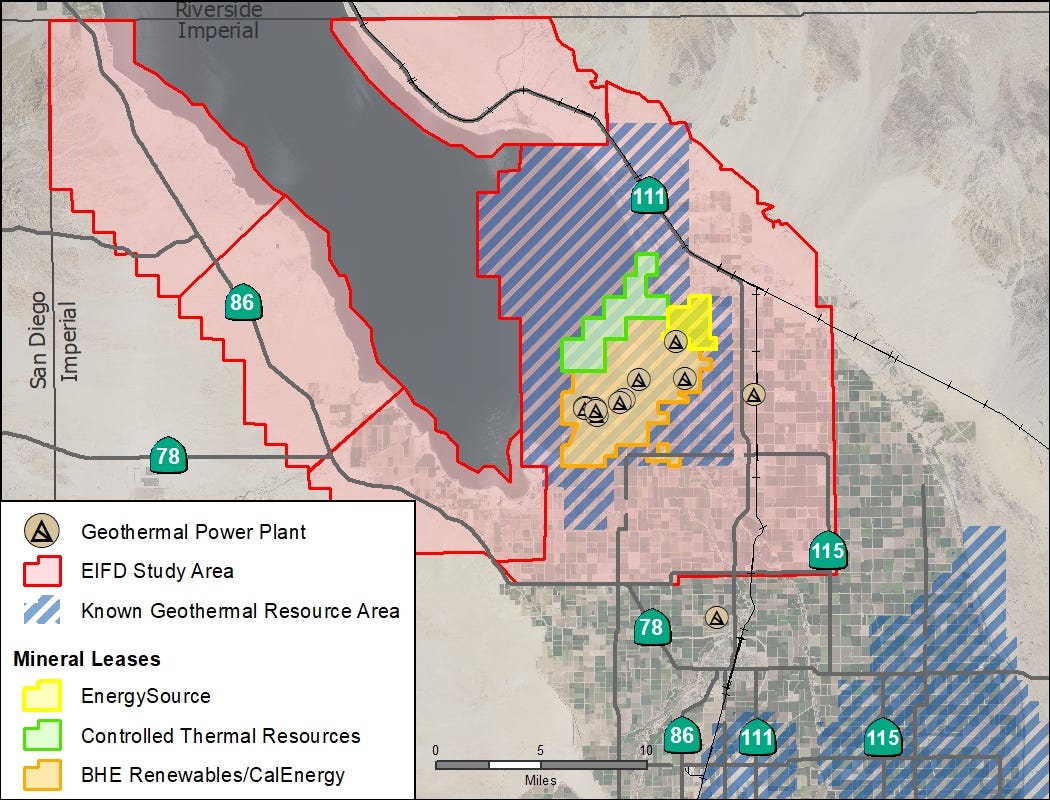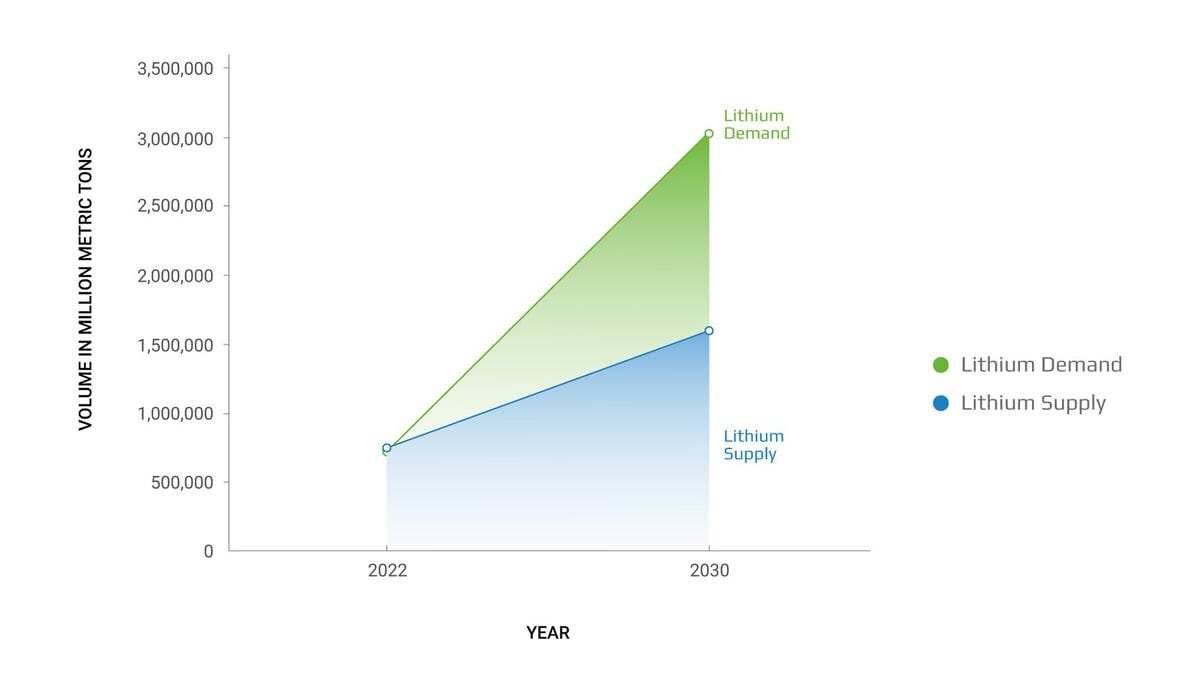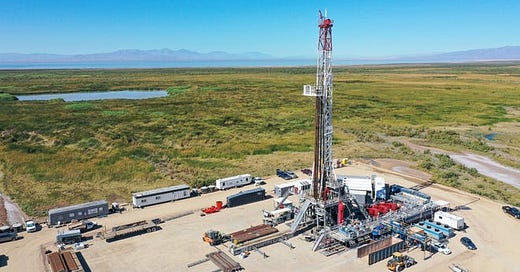
In a largely forgotten corner of southeast California, a storm is brewing. Quite literally bubbling up from subterranean geothermal vents, lithium brines are the new hot commodity in California’s eternal quest for green energy nirvana. Located on the eastern edge of the Salton Sea in Imperial County, the deposit known as “Lithium Valley” was confirmed in 2023 by the Department of Energy to contain roughly 18 million tons of lithium, or enough to build 375 million EV batteries.
A Rotten Legacy
But not all is perfect in paradise. The Salton Sea region is a poster child for poorly planned infrastructure projects gone awry. The “sea” itself is actually a highly saline inland lake which originally served as a natural drainage basin for the Colorado River. Agricultural irrigation in the early 1900s artificially increased the lake’s volume, as greater amounts of fresh water from the Colorado was diverted to Imperial Valley for farming, and effluence flowed downstream. By mid-century, the Salton Sea became a resort destination for Hollywood stars, and a thriving community popped up around its shores to support the tourism industry.
This heyday was short-lived, however, as mother nature eventually took her toll. Lacking an outlet, the lake began to fill with not only excess water from nearby farms, but other agricultural runoff, including concentrated salt and selenium deposits and nitrates from fertilizers. Successive evaporation of fresh water in the desert heat further increased salinity levels. In the late 1970s, wildlife around the sea began to decline and scientists warned of impending environmental catastrophe. The crisis reached its peak in the early 1990s, when populations of fish and birds in the region began to die off in droves, as eutrophication of the lake from fertilizers led to toxic algae blooms spreading botulism throughout the food chain.
Despite multiple attempts to mitigate the disaster, mainly through partially draining the lake to control the algae, the Salton Sea is to this day a highly polluted casualty of industrial waste. The exposed lakebed regularly sends clouds of toxic dust over surrounding communities, where the childhood asthma rate is 20%. The rural region is also one of the poorest in the state, populated mostly by Native American tribes and Hispanic agricultural workers. Given this tragic history, it is of little wonder that local residents and wildlife conservation groups view the anticipated development of Lithium Valley with suspicion.
The Fountain of Youth?
Due to the rich seismic activity in the Lithium Valley region, natural geothermal vents have been harnessed for decades to generate steam power for electric utilities. When this superheated water is pumped from deep underground wells (up to 2.5 km in depth), it brings with it mineral brines, including large deposits of lithium. In recent years, proposals have been put forward to couple existing geothermal plants with extraction units to strip the lithium salts out of the water before recirculating it back underground. Currently, there are 11 geothermal power plants operated by Controlled Thermal Resources and subsidiaries of Berkshire Hathaway that would be suitable for lithium retrieval. Pilot funding to develop and deploy this technology has been awarded by the federal government, and by the California Energy Commission (CEC), with projects set to start as early as 2025.
While geothermal lithium extraction is still in its infancy, California is already making plans to expand operations. Earlier this year, the CEC officially embarked on the “Lithium Valley Vision,” intended to scale up activities and survey the area for new potential geothermal mining sites. Supported by Assembly Bill 208 signed by Governor Gavin Newsom in 2022, the plan provides “$5 million to Imperial County for environmental review and community engagement and [to create] the Lithium Extraction Tax Law.” The tax law, which went into effect in 2023, imposes an excise tax on each metric ton of lithium carbonate equivalent, and earmarks 80% of revenue to flow back into the communities in the vicinity of mining activities. The map below shows the potential areas where future lithium capture facilities could be located.

A Mirage in the Desert
Compared to conventional open pit mining or brine evaporation, geothermal lithium extraction is touted as a cleaner, more sustainable method of obtaining the critical mineral. Brine evaporation, which accounts for about 66% of lithium production worldwide, is already creating severe environmental degradation in South American countries, such as Chile, currently the world’s second largest lithium supplier. In the salt flats of the Atacama desert, water containing lithium brines is pumped up to the surface, where it is left to evaporate in large man-made ponds, ultimately leaving only the separated lithium behind. This process can take years, and damages natural ecosystems through the leeching of toxic metals into groundwater. Moreover, brine evaporation requires enormous quantities of water, and resources are scarce in the region famously known to be the driest place on earth. An investigation by the NRDC recently reported that lithium mining is leading to forced migration of indigenous Atacama inhabitants due to water shortages. The study also found a negative ecological impact on migratory birds and native species that are highly adapted to the niche local conditions.
Searching for Shangri-La
Despite the considerable collateral damage associated with lithium mining, the global demand for so-called “white gold” is insatiable. Lithium is a crucial element for renewable energy technologies, powering the EV batteries and energy storage systems needed to reach “net zero” carbon consumption by 2050, as called for by the Paris Climate Agreement. The other main driver of lithium demand is the rise of the “digiverse,” artificial intelligence, and the Internet of Things (IoT), as Li-ion batteries are ubiquitous across all categories of consumer electronics and medical devices. According to a white paper published by the Center on Global Energy Policy at Columbia University:
Lithium demand has tripled since 2017, and could grow tenfold by 2050 under the International Energy Agency’s (IEA) Net Zero Emissions by 2050 Scenario. Demand in the lithium market is growing by 250,000–300,000 tons of lithium carbonate equivalent (tLCE) per year, or about half of the total lithium supply in 2021.
The graph below provides a stunning visualization of the projected demand for lithium vis-a-vis the available supply of currently operational mines.

Exacerbating the supply crunch is the growing geopolitical risk of relying on foreign countries, particularly China, for both raw minerals and refined lithium products. China is the third largest source of unrefined lithium (Australia is still first, by a wide margin). China also dominates the refining of lithium from countries around the world (75%), which has allowed the country to corner and control the lithium trade worldwide. Considering the increasingly adversarial nature of the U.S. relationship with China, seeking an independent lithium supply chain is a critical strategic goal for national security.
Reality Check
Which brings us back to Lithium Valley. Because direct lithium extraction from geothermal plants is still an untested technology, the true environmental impacts are not yet known. As extraction units isolate and remove the lithium within a closed-loop cycle, potential impacts are estimated to be much lower than either open pit mining or brine evaporation, which both require vast areas of land and lead to habitat destruction. However, there is no such thing as a truly clean mining operation. William Stringfellow, an environmental engineer at Berkeley Lab, estimates that the lithium production would probably double the amount of solid waste currently produced by the Salton Sea geothermal plants (for a total of about 168 thousand tons annually). While most of the by-product would be relatively harmless silica, heavy metals such as arsenic and lead are also present in some quantity in the briny geothermal waters, and would require special hazmat removal procedures.
There would also be water loss, estimated at 55,000-85,000 gallons of water per metric ton of lithium. While this is still much lower than the 530,000 gallons of water per ton of lithium used in the brine evaporation method, any unnecessary loss of water in an already dry region can lead to environmental problems over time.
So what is the solution? The need to secure a domestic supply chain of lithium must be balanced against the potential risks to the environment and quality of life in nearby communities. The industry would undoubtedly be a source of new jobs in a depressed area with high unemployment. If executed properly (and that’s a BIG if in badly-managed California), the extraction excise tax could go a long way towards community buy-in and could help build better quality schools and municipal buildings. At the same time, the CEC must require industry to perform regular economic and environmental impact analyses at all stages of the pilot programs, to ensure that the extraction technology is feasible for further scaling.
More practically, U.S. and state policy should promote technologies that reduce lithium demand, such as hybrid vehicles with smaller batteries than full EVs, that can help limit the use of lithium to applications where it is truly necessary.
The unfortunate reality, in the words of Thomas Sowell, is that there are no solutions, only trade-offs. Whether direct lithium extraction will be the next big thing, or the next Salton Sea fiasco, is now in the (not very capable) hands of our policymakers and vested interests. I wouldn’t hold my breath.
Electrically yours,
K.T.




I grew up in that region in the 50's, 60's, and 70's. The Salton Sea did indeed go from a unique paradise to a disaster in just a few decades. Your article is quite accurate. Back then, fishing for Corvina was a bountiful harvest, and the weather was great in the winter ....... fond memories https://www.youtube.com/watch?v=E-a3sQ09DFo It is today, as your article describes, an eco-disaster ...... so sad. Thanks so much for a walk-back-in-time.
I'm holding out for vacuum energy extraction technology myself. The alternative energy movement would all be quite humorous if it wasn't so dangerous.